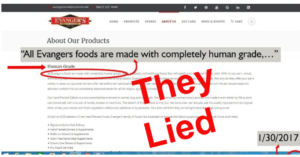Farewell to GIPSA and bad news for family farmers
Last week, the USDA withdrew its Farmer Fair Practices Interim Final Rule (a.k.a. the GIPSA—Grain Inspection, Packers & Stockyards Administration—rule).
The USDA announced this rule at the end of 2016 with great fanfare but, as I explained last April, then delayed it under pressure from the meat and poultry industries. Now those industries have succeeded in getting rid of it.
The official explanation? “Serious legal and policy concerns related to its promulgation and implementation.”
Oh, please.
According to last year’s USDA, the new rules would have leveled “the playing field for farmers by proposing protections against the most egregious retaliatory practices harming chicken growers.” Without this rule, family farmers have little defense against the mean and unfair practices of meat packers and poultry dealers.
Senator Chuck Grassley (Rep – Iowa) minces no words: The USDA is “just pandering to big corporations. They aren’t interested in the family farmer…The USDA is the U.S. Department of Agriculture, not the U.S. Department of Big Agribusiness.”
Told by Agri-Pulse of USDA’s decision to withdraw the rule, Sen. Grassley said he “violently opposed USDA’s decision to withdraw the rule:
If they would know how some of these people are treated that contract with these big multi-corporations, they wouldn’t be withdrawing that,…They’re just pandering to big corporations. They aren’t interested in the family farmer…Everybody thinks draining the swamp is firing a whole bunch of congressmen and a whole bunch of bureaucrats; it’s changing the culture of the bureaucracy…This is a perfect example of a swamp that’s being refilled by withdrawing these rules.
What happens now? More than 200 agriculture groups signed a letter to key ag-state lawmakers asking for more market transparency and anti-trust protections.
Will such calls grow? I certainly hope so.
For further reading
- The Federal Register notices are here.
- New Food Economy takes a deep dive into the withdrawal of this rule.
- So does Chuck Abbott of the Food and Environment Reporting Network (FERN)





